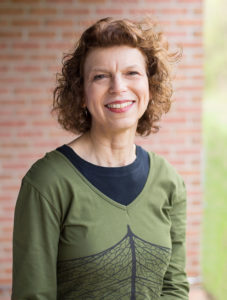I’m writing this on 12/21/20, Winter Solstice, the shortest 24-hour period of daylight in our calendar year in the Northern Hemisphere. There are holiday celebrations across religions faith traditions stemming from hundreds of past generations wanting to ward off the growing darkness and cheer on the slowly expanding of sunlight.
Today, we know that the shortened daylight hours can be explained by science. Yet for many of us, a scientific explanation isn’t enough to convince us that there is hope or something to wake up for.
Throughout the year many people suffer from varying intensities of depression with symptoms such as:
- Depressed mood
- Lack of interest in normal activities
- Change in appetite
- Change in sleep pattern
- Agitation, irritability
- Low energy
- Feeling worthless or hopeless
- Difficulty with concentration, indecisiveness
- Thoughts of death, possibly by suicide
For approximately 5% of adults in the U.S.A. these symptoms will appear for about 40% of the year, beginning in the fall, continuing through winter and gradually tapering off in the spring, and is known as Seasonal Affective Disorder, or SAD. (Though less common, some people will experience SAD in the summer.) Some might call this the “winter blues”, but that trivializes the very real symptoms (including excessive sleepiness, increased appetite and carbohydrate cravings) and loss of functioning people experience. SAD is a form of Major Depressive Disorder with Seasonal Pattern.
Why do some people experience depressive symptoms only during the winter months? According to psychiatry.org, these symptoms are linked to a biochemical imbalance in the brain that is prompted by shorter daylight hours and less sunlight in the winter. As the seasons change, some people will experience a shift in their circadian rhythm causing a sense of being out of step with your daily schedule. This is more noticeable the further you live from the equator.
When people hear “seasonal” they might be tempted to just suffer through it believing the depressive symptoms will go away on their own. Yet there is no need to do that, to ‘wait it out’ when treatment is readily available. Examples of common treatments include light therapy* (which has the individual sit in front of a light box for 20-30 minutes a day), antidepressant medications such as SSRIs and talk therapy. These treatments work best in tandem.
Personally, I advocate starting with a few simple behavioral changes. When the sun is shining, get outside! Decreased vitamin D levels have been linked to depression, and the sun is the original source of vitamin D. People with SAD often have night owl tendencies, but during these shorter days it is really helpful to sleep when it is dark out and to be awake when it is (or when it’s supposed to be) light out; thus, forcing your circadian rhythm back into sync.
It has been a long year for many of us. A year in which much has seemed out of our control. Yet self-care is always within our control and I encourage everyone to enjoy the bright holiday lights, the company of friends and family, even if it is via telephone or videoconferencing, and continue to seek out ways to feel good about ourselves and our place on this earth.
If you are experiencing thoughts of suicide, please contact the National Suicide Prevention Lifeline at 800.273.8255 or Common Ground at 800.231.1127.
*Always consult with your physician or other medical professional before starting treatment.
 Maureen Lyn Bernard, LMSW, ACSW, CADC, CCS, MIMIT
Maureen Lyn Bernard, LMSW, ACSW, CADC, CCS, MIMIT
Clinical Therapist/Continuing Education and Training Specialist